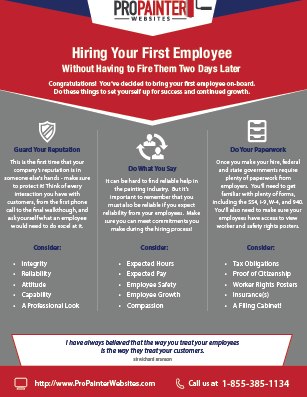Vital Seasonal Aspects Of Commercial Outside Painting: What You Need To Understand
Vital Seasonal Aspects Of Commercial Outside Painting: What You Need To Understand
Blog Article
Article Produced By-Regan Chaney
When you're planning a commercial exterior painting project, seasonal variables can make or break your results. You'll want to take into consideration how temperature level and humidity effect paint application and drying times. Picking learn more can ensure your paint sticks correctly and lasts much longer. Yet which periods are truly the very best for this sort of job? Let's discover the key elements that can impact your project's success.
The Effect of Temperature on Paint Application
When you're preparing a business exterior paint task, the temperature level can significantly influence how well the paint sticks and dries out.
Preferably, you intend to paint when temperature levels range between 50 ° F and 85 ° F. If it's too chilly, the paint may not cure appropriately, leading to issues like peeling or breaking.
On the other side, if it's also warm, the paint can dry also rapidly, protecting against appropriate bond and leading to an uneven surface.
You must also think about the moment of day; morning or late afternoon offers cooler temperatures, which can be extra desirable.
Constantly examine the manufacturer's referrals for the details paint you're making use of, as they typically give assistance on the suitable temperature level array for optimal results.
Moisture and Its Impact on Drying Times
Temperature isn't the only ecological element that affects your business exterior painting job; humidity plays a significant duty also. High moisture degrees can slow down drying times dramatically, affecting the overall high quality of your paint work.
When the air is filled with wetness, the paint takes longer to cure, which can cause issues like inadequate bond and a higher danger of mildew growth. If you're painting on a specifically humid day, be planned for prolonged delay times between layers.
It's critical to keep track of neighborhood climate condition and plan as necessary. Ideally, go for moisture levels between 40% and 70% for optimum drying out.
Keeping these factors in mind ensures your task remains on track and delivers an enduring finish.
Best Seasons for Commercial Exterior Paint Projects
What's the best time of year for your business exterior painting jobs?
Springtime and very early fall are commonly your best options. During these periods, temperature levels are light, and moisture levels are frequently reduced, creating perfect problems for paint application and drying out.
Avoid summer season's intense heat, which can cause paint to completely dry too promptly, resulting in poor attachment and surface. Similarly, winter's chilly temperatures can hinder proper drying out and treating, taking the chance of the longevity of your paint work.
Go for days with temperatures between 50 ° F and 85 ° F for ideal results. Keep in mind to check the neighborhood weather forecast for rainfall, as wet problems can destroy your project.
Preparation around these elements ensures your paint task runs efficiently and lasts longer.
Final thought
To conclude, planning your business outside paint projects around seasonal considerations can make a significant distinction in the end result. By organizing work during the excellent temperature levels and moisture degrees, you'll guarantee far better attachment and drying out times. Remember to watch on neighborhood weather report and choose the correct time of year-- spring and early fall are your best options. Taking these actions will assist you achieve a sturdy and expert finish that lasts.
